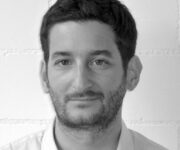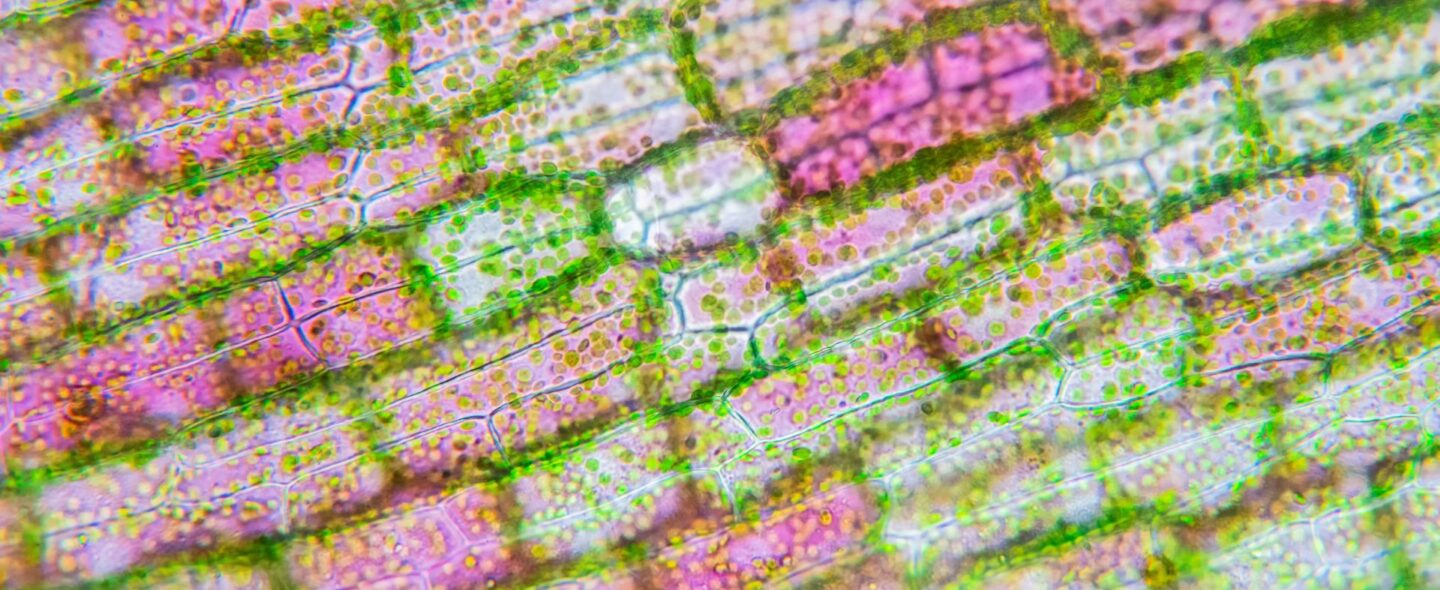
Dr. Martin Schüle
San Francisco – August 25, 2025
Maulde Cuérel (AI Program Manager, Swissnex in San Francisco): Can you tell me in simple terms what your research focuses on right now?
Dr. Martin Schüle (Senior Researcher, ZHAW): My work at the Zurich University of Applied Sciences (ZHAW) lies at the intersection of AI and life sciences. My team and I work with research partners and industries that bring data and domain knowledge to life science projects, while we bring AI, such as data science modelling and machine learning. We have diverse projects from all fields of life sciences, ranging from smart farming, where we try to optimize fertilizer use through reinforcement learning, to analyzing NMR spectra (a technique used to determine the structure and composition of molecules) with deep learning methods. We also deal with text data and accordingly use natural language processing (NLP) methods and increasingly large language models (LLMs) such as ChatGPT. On a more personal note, I have an interest in the philosophical topics of AI, as I feel that many core issues with AI are related to philosophical questions.
During my stay with Swissnex in San Francisco, I focused on two projects we want to develop with my team over the next two years: the interpretability of LLMs and Artificial Life.
In interpretability, the goal is to understand better how LLMs, and generally large deep learning models, work, allowing us to steer them towards certain behaviours.
Artificial Life, also called ALife, is about studying artificial life forms, computational models of life. A well-known example of these is the cellular automata (CA) model «game of life» which can generate life-like forms and behaviours. CA can now be connected with novel AI methods, which is an exciting new development.
What led you to specialize in the intersection of AI and life sciences? What fascinates you about artificial life?
I studied physics with a master’s thesis and PhD at ETH Zurich at the Institute of Neuroinformatics (INI) and the Chair of Philosophy. At INI, I was among neuroscientists and biologists, exposing me to life sciences quite a lot at that time. I later joined the Institute of Computational Life Sciences at the Zurich University of Applied Sciences, which was a good fit for my research interests and also worked well for raising a young family in Switzerland. What always fascinated me in the field was how complex systems, whether biological or computational ones, can show emergent behaviour. It is kind of magical, and there are still a lot of open questions around it.
What are some of the practical applications of your research that you are most excited about?
Working with industry is exciting because it forces fast, hands-on problem-solving with coding, often leading to learning something new. Real-world data often holds surprises and stimulates new problems and insights, and it is also nice to have, in the best case, a real-world impact. With the ALife project, I used to think that it was a rather technical and basic research work, but in San Francisco, I realized that there are quite a lot of connections to practical applications, such as models of virtual cells, digital twins of biological cells, which allow precise studies of their behavior. Several start-ups are already exploring this, making it an exciting field.
Why did you decide to come here to the Bay Area / San Francisco? Was there a particular question or challenge in your research that brought you here?
The Bay Area is still the AI capital of the world, so it was a natural choice for me to come here to learn more about AI applications in life science and see how my projects could evolve with the connections and knowledge from here.
The environment here, with so many start-ups, companies, and universities working in AI, is very stimulating and inspiring. After a few weeks in San Francisco, I can say that the city and the ecosystem here felt like a boost for my research and projects. It helped me figure out if we are on the right track, if our ideas are good, and if it can work out. Research in Switzerland is very good, of course, but AI hasn’t yet had the same impact as it does here, for better or worse.
Regarding connections and collaborations, were you able to establish any during your time here?
Yes, I met a lot of people and I had the opportunity to attend many events throughout my time in the Bay Area. It was impressive to see how much networking and connections happen during these AI events, which are held almost daily in the Bay Area. Also, Sarah Burckhardt, Academic Program Manager at Swissnex in San Francisco, who organized my stay, was very helpful in connecting me with different experts here and organizing meetings with other researchers from Stanford and Berkeley and other AI leaders in the Bay Area.
Can you share an example of a person, company, or institution you met that had (or you think will have) an impact on your work?
Two encounters especially relevant to my research were with the non-profit institutions called FutureHouse and Arc Institute, which both do fascinating work on AI in life sciences. FutureHouse is building AI agents for scientific discovery, and the Arc Institute works on virtual cell models.
I met a lot of people at AI events, and in the Bay Area, it’s not impossible to meet with legends in the AI field. For example, I happened to meet by chance Jascha Sohl-Dickstein, the inventor of the diffusion model, the first and main model in visual generative AI.
How has Swissnex played a role in your residency?
Swissnex played a crucial role in my research residency. Sarah Burckhardt coordinated my stay and arranged valuable introductions at Stanford, Berkeley, and local AI events, helping me connect with a diverse range of researchers. Swissnex also hosted interesting events with people from various backgrounds. Additionally to that, having an office space in a great location in San Francisco where one can chat with other invited researchers and start-up founders was very nice.
How is the conversation around AI and life science here compared to Switzerland or Europe?
AI in life sciences is a trending topic here, and I was a bit surprised by how much funding and effort already go into the field. I was also surprised by the level of interest in my artificial life project. I considered it a rather niche research area, but here in the Bay Area, there are already research teams and start-ups working in the field, especially in virtual cell modelling.
Generally, I would say there is more “tech-optimism,” here, an attitude or ideology that problems can be solved by science and engineering. There are AI critics, NGOs, and organisations that critically reflect on AI development, but they are less prominent than in Europe. In my opinion, the average middle-class San Franciscan may be a bit frustrated by the effects of the tech industry on the city, but a powerful ecosystem of big tech companies, VCs, startups, and research institutions is pushing AI very much ahead.
Do you see differences in how researchers and institutions approach AI and life science in the Bay Area versus back in Switzerland/Europe?
I would say in the Bay Area, there is more of a focus on business and practical applications in research. Even Stanford professors are involved with some AI start-ups as their side projects. On the other hand, there are a lot of start-ups and private research institutions, such as the FutureHouse mentioned earlier, that, in my view, do fundamental research that usually takes long to get returns on investment and with an actual product quite far away. Still, it seems that people and investors here are more optimistic and risk-tolerant compared to Switzerland, so these fundamental research institutions somehow still receive financial interest.
Generally speaking, I think the biggest difference is that there is way more funding, business-wise, with VCs, but research-wise, too. For example, Stanford has very generous internal funding schemes. Another observation is that more people are hired, both in academia and the AI industries, so there are more opportunities but also more competition.
And on a bigger extent, AI is much more present here, the billboards all over the city advertise AI tools and businesses, and daily life is also more impacted by things like robotaxis and how the city is structured socially and economically.
What is next for your research when you go back to ZHAW?
I will definitely continue with our research projects as I now have the validation that they are relevant and timely from the perspectives and discussions I had here. So the next steps will be to get more funding for these projects to establish this kind of research at ZHAW and in Switzerland. When it comes to the artificial life project, for example, we are the only research group doing this in Switzerland at the moment, as far as I know.
How do you think your experience here will influence your work or career path moving forward?
One thing I would like to undertake now that I have seen it many times here meeting with academic researchers from the Bay Area, would be to join or start a start-up or spin-off. Regarding my research projects, I think the experience over here makes me want to push a bit harder and quicker to get more traction and funding.
What would you say to someone considering participating in a sabbatical here at Swissnex in San Francisco?
I can only recommend the experience. Although summer is a great period for California, it can be cold and foggy in San Francisco, and universities are in vacation mode, making it harder to meet academics. To really take it all in, I would suggest staying for several weeks. My few weeks just flew by, but the upside is that I’m already thinking about coming back!
The Academic Residency at Swissnex San Francisco offers Swiss researchers, professors, and lecturers an immersive experience in one of the world’s most innovative ecosystems. Participants can join individually or as part of a cohort centered on a shared academic topic, combining independent exploration with collaborative learning.
The program includes training sessions and workshops, introductions to relevant ecosystem players, regular check-ins, and access to Swissnex’s workspace at Pier 17.
If you want to learn more about our Academic Residency, please contact Sarah Burckhardt, Academic Engagement Program Manager at Swissnex in San Francisco.
Dr. Martin Schüle
